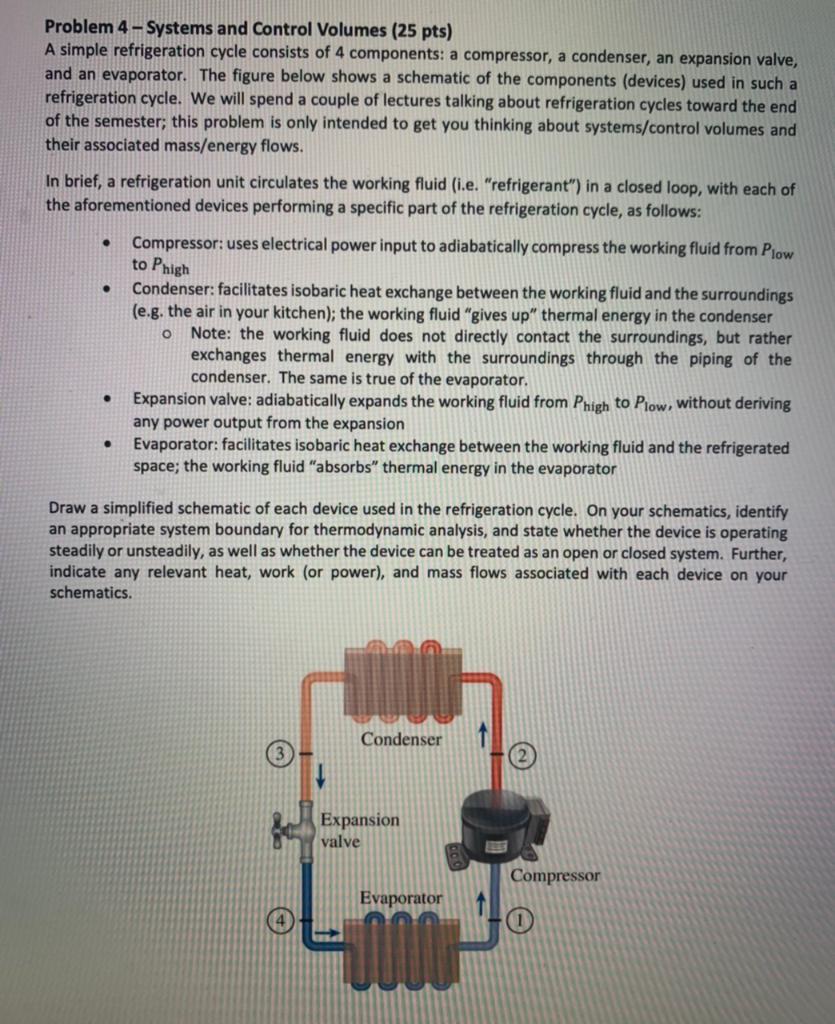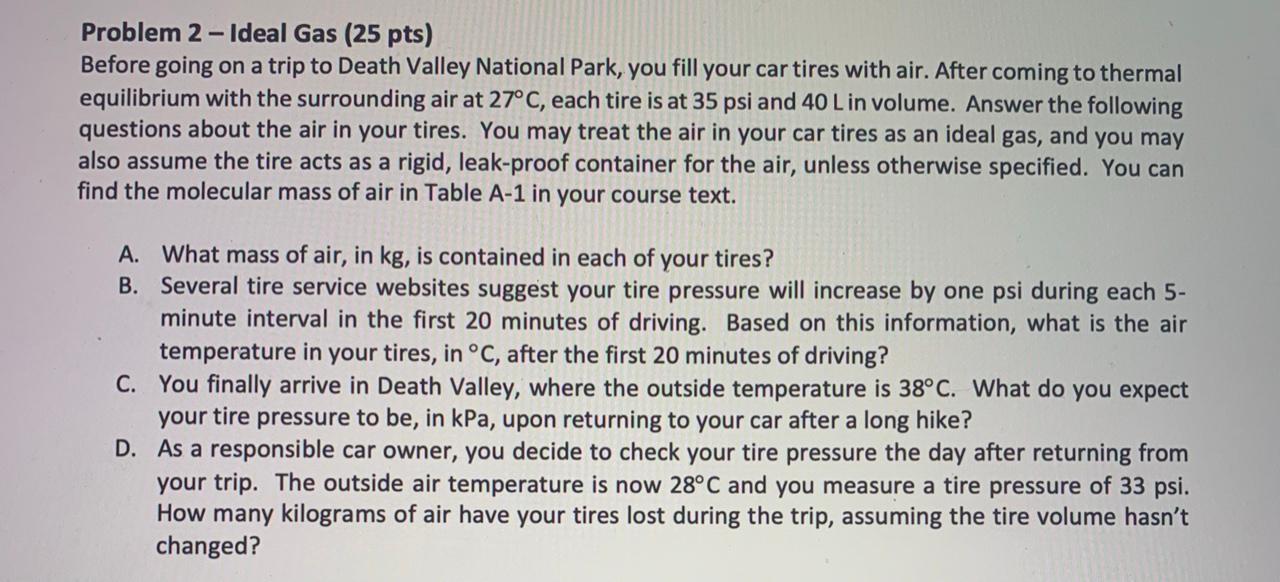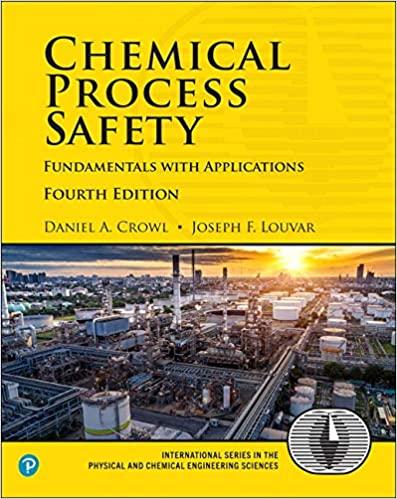Can I please get help with both of these question I posted them seperately but the expert got both wrong so can someone please do this right. 

Problem 4 - Systems and Control Volumes (25 pts) A simple refrigeration cycle consists of 4 components: a compressor, a condenser, an expansion valve, and an evaporator. The figure below shows a schematic of the components (devices) used in such a refrigeration cycle. We will spend a couple of lectures talking about refrigeration cycles toward the end of the semester; this problem is only intended to get you thinking about systems/control volumes and their associated mass/energy flows. In brief, a refrigeration unit circulates the working fluid (i.e. "refrigerant") in a closed loop, with each of the aforementioned devices performing a specific part of the refrigeration cycle, as follows: . Compressor: uses electrical power input to adiabatically compress the working fluid from Plow to Phigh Condenser: facilitates isobaric heat exchange between the working fluid and the surroundings (e.g. the air in your kitchen); the working fluid "gives up" thermal energy in the condenser o Note: the working fluid does not directly contact the surroundings, but rather exchanges thermal energy with the surroundings through the piping of the condenser. The same is true of the evaporator. Expansion valve: adiabatically expands the working fluid from Phigh to Plow, without deriving any power output from the expansion Evaporator: facilitates isobaric heat exchange between the working fluid and the refrigerated space; the working fluid "absorbs" thermal energy in the evaporator . . Draw a simplified schematic of each device used in the refrigeration cycle. On your schematics, identify an appropriate system boundary for thermodynamic analysis, and state whether the device is operating steadily or unsteadily, as well as whether the device can be treated as an open or closed system. Further, indicate any relevant heat, work (or power), and mass flows associated with each device on your schematics. Condenser Expansion valve Compressor Evaporator then Problem 2 - Ideal Gas (25 pts) Before going on a trip to Death Valley National Park, you fill your car tires with air. After coming to thermal equilibrium with the surrounding air at 27C, each tire is at 35 psi and 40 L in volume. Answer the following questions about the air in your tires. You may treat the air in your car tires as an ideal gas, and you may also assume the tire acts as a rigid, leak-proof container for the air, unless otherwise specified. You can find the molecular mass of air in Table A-1 in your course text. A. What mass of air, in kg, is contained in each of your tires? B. Several tire service websites suggest your tire pressure will increase by one psi during each 5- minute interval in the first 20 minutes of driving. Based on this information, what is the air temperature in your tires, in C, after the first 20 minutes of driving? C. You finally arrive in Death Valley, where the outside temperature is 38C. What do you expect your tire pressure to be, in kPa, upon returning to your car after a long hike? D. As a responsible car owner, you decide to check your tire pressure the day after returning from your trip. The outside air temperature is now 28C and you measure a tire pressure of 33 psi. How many kilograms of air have your tires lost during the trip, assuming the tire volume hasn't changed








